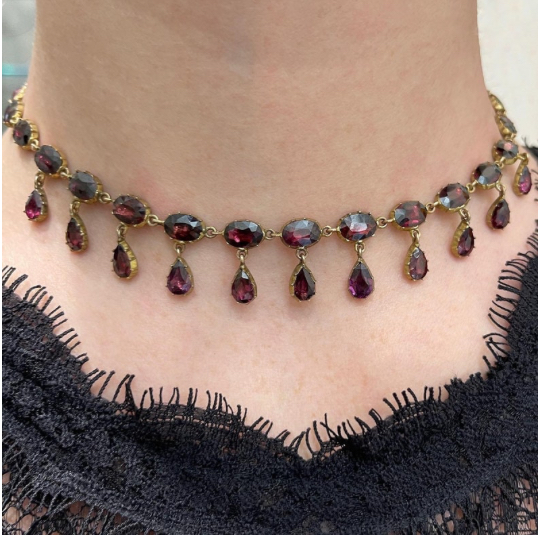The Georgian Period (1714-1830) is marked by romanticism, economic prosperity, and excess, inspired by King George’s emphasis on appearance, art, and leisure. Designs from this period often included feminine, floral designs and sentimental touches, such as acrostic rings spelling out words with gemstones. Consistent with the maximalism of the period, women wore ‘day’ and ‘night’ jewelry. They wore themselves with pearls and colored gems set in 18ct yellow gold and diamonds set in silver, making them appear brighter at night.
During this era, closed gemstone settings with foil were common. This technique involved placing a thin layer of metal or another material, occasionally colored to increase the saturation of the stone’s natural hues, behind the gemstone to increase its light reflection and color vibrancy towards the viewer. To make these designs more accessible, this era saw the introduction of Pinchbeck (a copper and zinc alloy that resembles gold) and Paste (essentially glass and often placed with a foiled or colored backing) jewelry, allowing for the emulation of high jewelry at a more affordable price, though they were still commonly worn by the wealthy.
*Featured image is an example of another popular gemstone (and my favorite style) a Georgian foiled back, flat cut garnet necklace set in gold which can be found here: https://tinyurl.com/yc26hs7s
https://www.veranda.com/luxury-lifestyle/luxury-fashion-jewelry/a36430997/regency-jewelry/

Leave a Reply